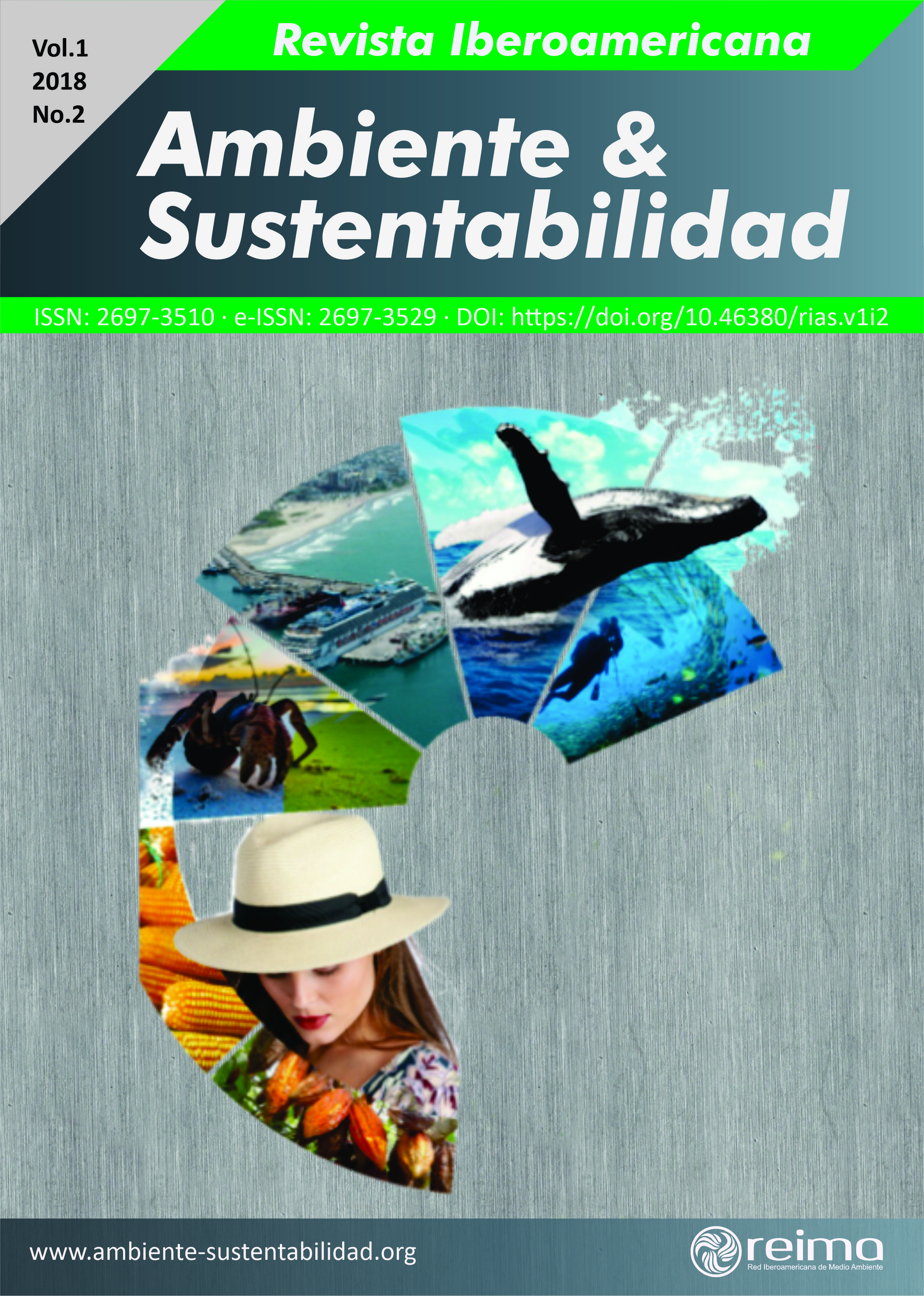Organic matter removal in textile wastewater by applying ozone.
DOI:
https://doi.org/10.46380/rias.v1i2.31Keywords:
environment, oxidation, pollutionAbstract
The study of the oxidation of organic matter, measured as the 5-day Biochemical Oxygen Demand and Total Organic Carbon, was developed through the application of ozone in fully mixed Batch reactors, with the objective of evaluating the oxidative capacity when applied to the wastewater of the textile industry, considering reaction times between 10 and 60 minutes. A SEFILTRA Ozone Generating set was used, which is characterized by an air flow of 2 dm3 / min, ozone concentration of 9.50 mg / dm3, an O3 production of 19 mg / min and a weight% of 0.8. 30 dm3 of the effluents from the textile companies «Jhonatex» and «Textil Buenaño», located in Tungurahua and «Modatex» in Azuay, were mixed. In total, 90 dm3, to which three repetitions of analysis were performed after mixing, using the mean values ??as initials of the ozonation process. Reaction times between 10 and 60 minutes were selected, each process being repeated three times. For each ozonation time, the reactor worked with 5 dm3 in each of the three replicates with each time. The aforementioned indicator parameters of contamination showed satisfactory oxidative levels, around 90% removal, after 50 minutes of reaction, complying with the current regulatory restriction for discharges into sewers and freshwater bodies. Both were oxidized via ozonation, according to second degree polynomial behaviors, with correlation coefficients above 0.97.
Downloads
Metrics
References
Andía, Y. (2000). Tratamiento de agua coagulación y floculación. Documento técnico. Planta de Tratamiento de Agua SEDAPAL. https://cutt.ly/eynKON7
Ayala, M., Peñuela, G. y Montoya, J. (2006). Procesos de membranas para el tratamiento de agua residual industrial con altas cargas del colorante amarillo ácido 23. Revista Facultad de Ingeniería Universidad de Antioquia, 38, 53 – 63. https://cutt.ly/Hflzb37
Bolaños, R.A. (2010). Propuesta de recuperación del agua residual proveniente de la industria textil. [Tesis de pregrado, Universidad de El Salvador]. https://cutt.ly/sflznRT
Castro, L. y Durán, J. (2014). Degradación y decoloración de agua contaminada con colorantes textiles mediante procesos de oxidación avanzada. Tecnología en Marcha, 27(2), 40-50. https://cutt.ly/1flzmf3
Cortázar, A., González, C. A., Coronel, C., Escalante, J. A., Castro, J., y Villagómez, J. R. (2012). Biotecnología aplicada a la degradación de colorantes de la industria textil. Universidad y Ciencia Trópico Húmedo, 28(2), 187–199. https://cutt.ly/fflzQgh
Eaton, A.D., Clesceri, L.S., Franson, M.A.H., Rice, E.W. & Greenberg, A.E. (ED). (2005). Standard Methods for the Examination of Water and Wastewater. 21th Ed. American Public Health Association.
Leiva, A., Macías, E., Zambrano, T., Barre, R., Montesdeoca, R. y Andrade, J. (2018). Ozonización de residuos líquidos textiles para remoción de Sólidos Suspendidos Totales, Demandas Química y Bioquímica de Oxígeno, Grasas y Aceites. European Scientific Journal, 14(3), 40-47. https://cutt.ly/gflzWIE
Leiva, A., Peñafiel, S.E., Andrade, J.A., Aveiga, A.M., Brito, G.G., Zambrano, T.R. (2016). Estudio preliminar sobre la decoloración del residual líquido de la producción de papel mediante ozonización. European Scientific Journal, 12(9), 164-171. https://cutt.ly/AynCuV7
LEQA – Grupo de Electroquímica Aplicada y Electrodiálisis. (2018, 20 de enero). Tratamiento de aguas residuales por métodos electroquímicos. Universidad de Alicante. https://cutt.ly/FflzRY5
López, V. y Crespi, M. (2015). Gestión de los efluentes de la Industria Textil. Cuaderno Tecnológico 18. Instituto de Investigación Textil y Cooperación Industrial de la Universidad Politécnica de Cataluña. https://cutt.ly/yynVaIc
Rico, A. (2015). Diseño de un proceso de adsorción para el tratamiento de aguas residuales de baños de tintura mediante ciclodextrinas. [Tesis de doctorado, Universidad Politécnica de Valencia]. http://hdl.handle.net/10251/56909
Romero, T de J., Rodríguez, H. y Masó, A. (2016). Caracterización de las aguas residuales generadas en una industria textil cubana. Ingeniería Hidráulica y Ambiental, 37(3), 46-58. https://cutt.ly/lflzYGs
Romero, T.D.J., Rodríguez, H., y Masó, A. (2016). Caracterización de las aguas residuales generadas en una industria textil cubana. Ingeniería Hidráulica y Ambiental, 37(3), 46-58.
SEFILTRA. (2018). Productos. Consultado el 5 de febrero de 2018. https://cutt.ly/GflzUdC
Simón, E. (2008, 2 de febrero). Los metales pesados en las aguas residuales. Madridmasd. https://cutt.ly/vflzUW4
Downloads
Published
How to Cite
Issue
Section
License
Copyright (c) 2020 Agustín Leiva Pérez, Roy Leonardo Barre Zambrano, Sergio Santiago Alcívar Pinargote, Carlos Solórzano Solórzano , Joffre Andrade Candell

This work is licensed under a Creative Commons Attribution-NonCommercial-ShareAlike 4.0 International License.
This work is licensed under a Creative Commons Attribution-NonCommercial-ShareAlike 4.0 International License (CC BY-NC-SA 4.0)
© This license allows users to distribute, remix, adapt, and build upon the material in any medium or format, provided that attribution is granted to the creator.














